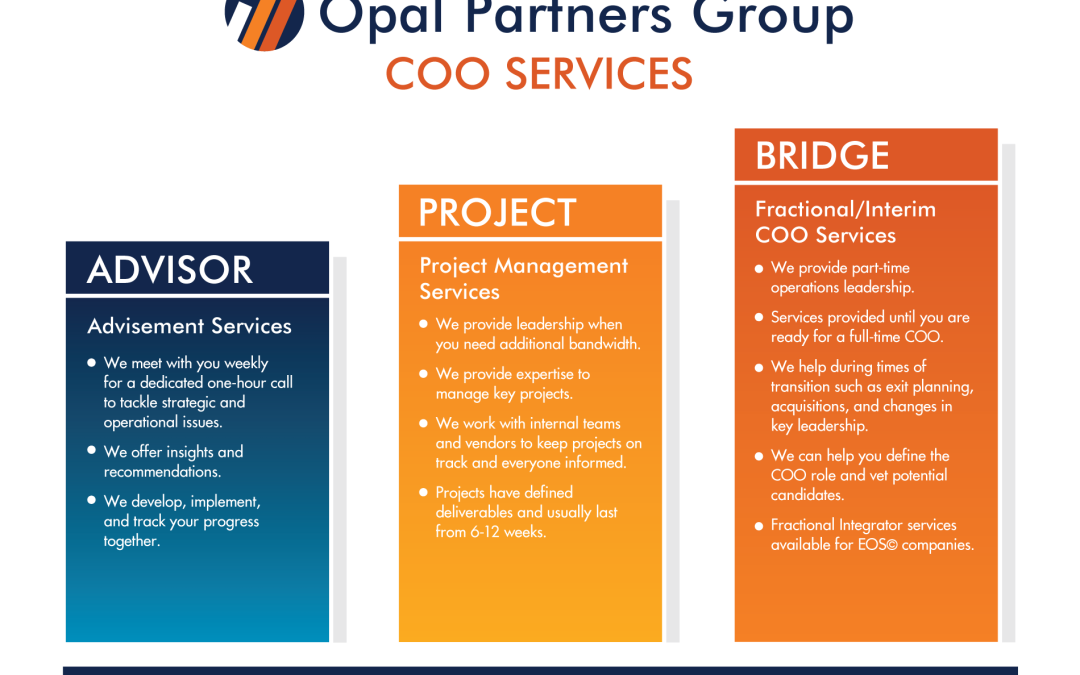
by Cary Matthews | Apr 23, 2024 | Culture, Leadership, Strategic Planning
Whether you mean to or not, you are constantly communicating to your employees. You must be intentional about the messages they receive. I learned this from dogs and children, and our grown-up employees are just as observant. My dog observes what I do and modifies his...

by Kevin | Feb 6, 2024 | change, Fractional COO, Leadership, Success
The hill was more than I bargained for. It was a struggle and I should have realized earlier that is was time to act now. I had all kinds of excuses: the weather was bad. I didn’t have time. It could wait another day. I had other plans. No, I wasn’t hiking up a...

by Kevin | Feb 6, 2024 | change, Fractional COO, Leadership
Sometimes you initiate change, and sometimes it is forced on you. Regardless of how you got there, you must deal with it. Facing change isn’t always easy or wanted. Key employees leave. New technology disrupts the market. Your exit strategy or timeline...

by Kevin | Feb 6, 2024 | Fractional COO, Growth, Uncategorized, Vision
Business owners can be idea machines. Your business started as an idea, and ideas keep the business fresh and relevant. By themselves don’t accomplish anything unless you turn ideas into reality. Unless you can accomplish something by the stroke of a pen, you have...

by Kevin | Feb 6, 2024 | Fractional COO, Leadership, Time
Do you feel stuck? On one hand, you’ve been “all in” on building your business for a long time. You need time to do those things that only you can do, or you need to devote time to family or passions outside the business. You can’t continue to...







